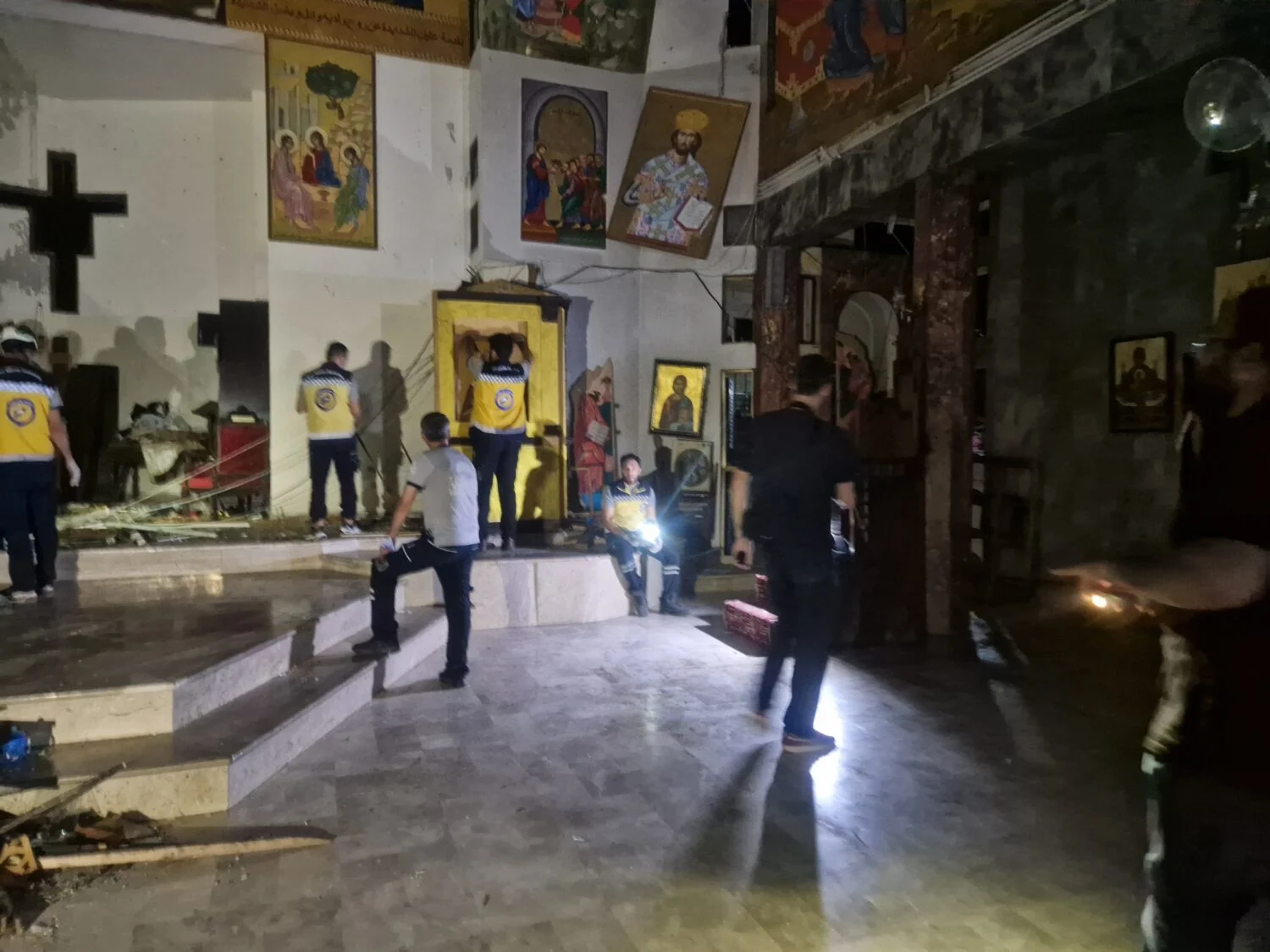The suicide bombing that targeted St. Elias Church in the Dweila’a district of Damascus during Sunday mass has sparked grave concern over the resurgence of terrorist activity in Syria. These fears have been intensified by threats from Saraya Ansar al-Sunna, the group that claimed responsibility for the attack and pledged to target additional churches. Anxiety has been further fuelled by a statement from a commander in the “New Syrian Army,” revealing intelligence that ISIS is actively working to reactivate sleeper cells across the country.
The attack—resulting in dozens of casualties and marking the deadliest such incident in years—raises urgent questions about the preparedness of Syria’s security apparatus. It has laid bare critical vulnerabilities in the country’s newly formed security forces and their failure to safeguard civilians.
Heightened Fears Among Minorities
The bombing has deeply unsettled Syria’s religious minorities, long vulnerable throughout the years of conflict. Despite repeated international appeals for the transitional authorities to ensure their protection and inclusion in the country’s future, these communities remain exposed and at risk.
Warnings had already been issued. Rami Abdulrahman, Director of the Syrian Observatory for Human Rights, recently warned of an impending escalation in terrorist activities, citing the persistent presence of extremists in urban areas—whether affiliated with ISIS or linked to Hay’at Tahrir al-Sham, according to media reports.
Although church authorities had not previously received explicit threats, Abdulrahman noted the emergence of menacing graffiti on church walls. He also questioned the speed with which the Interior Ministry attributed the bombing to ISIS: “If the state still doesn’t know who committed past massacres against Alawites, how did it identify the perpetrator of this attack within half an hour?” he asked. His remarks highlighted apparent inconsistencies in the official narrative, especially as some reports suggest the attack may have been orchestrated by remnants of the former regime.
While the Interior Ministry claimed ISIS was responsible and that suspects were apprehended on Tuesday, Saraya Ansar al-Sunna had already publicly claimed responsibility. This discrepancy has only deepened public scepticism towards the government’s account.
Restoring Security: A Pressing Challenge
Re-establishing security now stands as one of the most urgent challenges facing the transitional government in Damascus—especially following the fall of the Assad regime, which for years portrayed itself as the protector of Syria’s minorities. These groups have suffered repeated assaults, particularly from jihadist factions, foremost among them ISIS.
According to a recent report in Asharq Al-Awsat, a military source disclosed that ISIS is preparing a surprise offensive aimed at seizing control of strategic districts in several cities, starting with Homs. The group’s objectives reportedly include religious sites and shrines, aiming to embarrass the transitional authorities and undermine their legitimacy.
The same source stated that ISIS is employing a new strategy, infiltrating urban centres from Syria’s deserts and steppe regions—despite ongoing efforts by authorities to sever its logistical and support networks.
What Needs to Be Done?
A Reuters investigation earlier this month reported that ISIS is actively reactivating its cells in both Syria and Iraq, prompting heightened international concern over the group’s resurgence. European officials have voiced growing fears that foreign fighters are already entering Syria to join its ranks.
According to the investigation, Western intelligence agencies have tracked the arrival of several suspected foreign fighters from Europe, although it remains unclear whether they are affiliated with ISIS or other extremist actors.
In a significant development, Reuters cited both American defence and Syrian officials who confirmed that the United States had shared intelligence with the Syrian government regarding the threat—a rare move, underscoring the severity of the situation.
A National Response Is Urgently Needed
Confronted by this mounting threat, the interim government led by Ahmad Al-Sharaa carries a heavy burden. It must formulate and implement a comprehensive national counterterrorism strategy—one that extends beyond conventional security measures. Dismantling sleeper cells, particularly in the Syrian steppe, which has long served as a haven for jihadist networks, must be a priority.
Effective coordination with other domestic actors—especially the Syrian Democratic Forces (SDF), who possess significant experience in combating ISIS—is vital. Incorporating these forces into a cohesive national security framework could prove instrumental. Enhanced intelligence-sharing with neighbouring countries, particularly Iraq, which has extensive operational knowledge in tracking ISIS movements, is also crucial.
Equally important is the establishment of a durable political consensus that can insulate Syria from future instability and avert the formation of power vacuums that extremist groups could exploit. Such unity would also deter external actors from leveraging jihadist factions to destabilise Syria’s delicate political transition.
Ultimately, the bombing of St. Elias Church must serve as a stark warning—not only about the re-emergence of violent extremism, but about the urgent need for unified, strategic, and inclusive action to confront it.
This article was translated and edited by The Syrian Observer. The Syrian Observer has not verified the content of this story. Responsibility for the information and views set out in this article lies entirely with the author.


